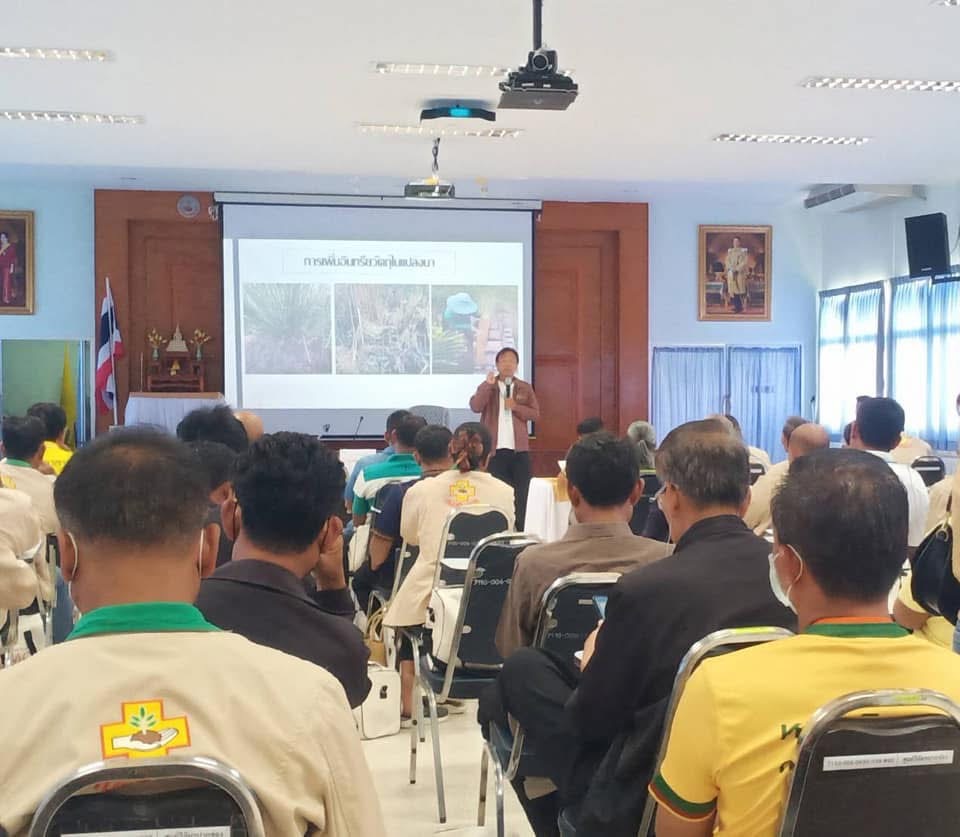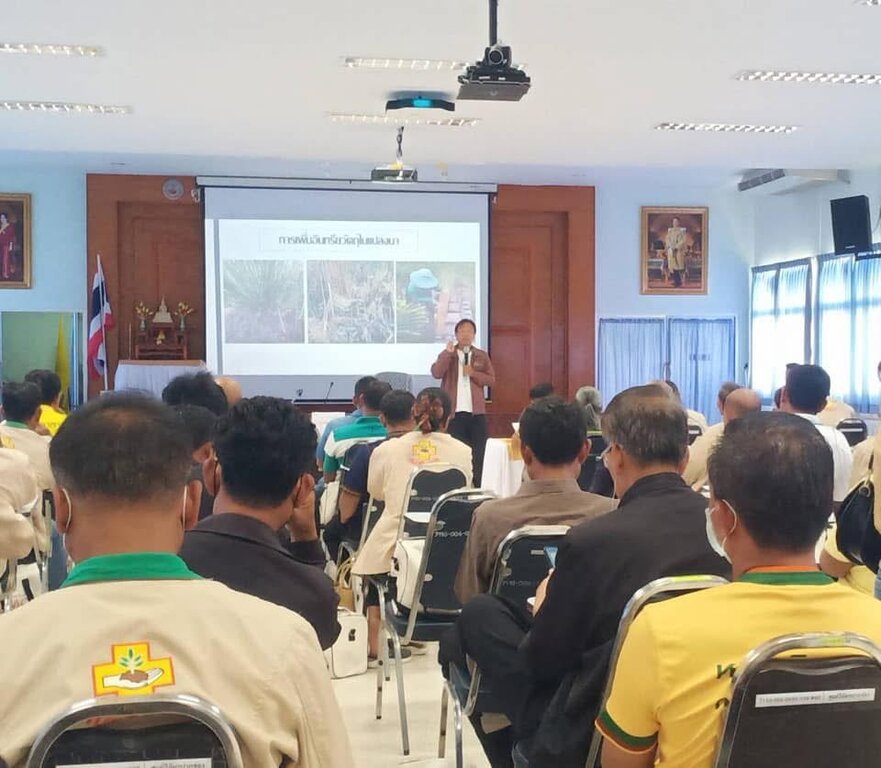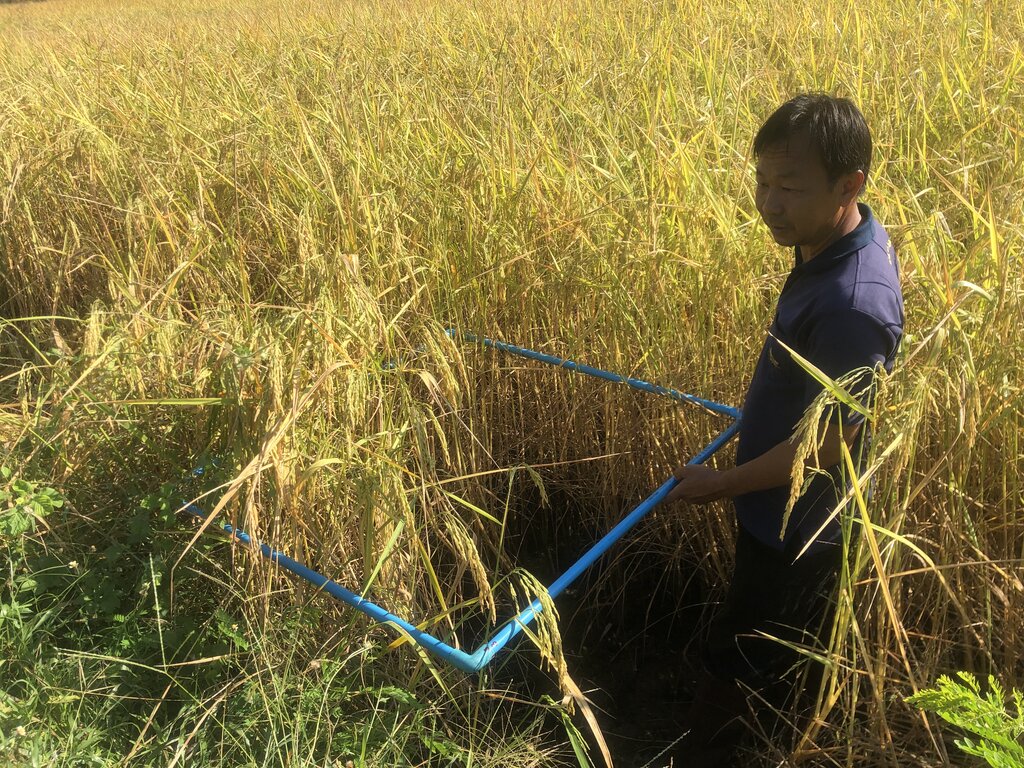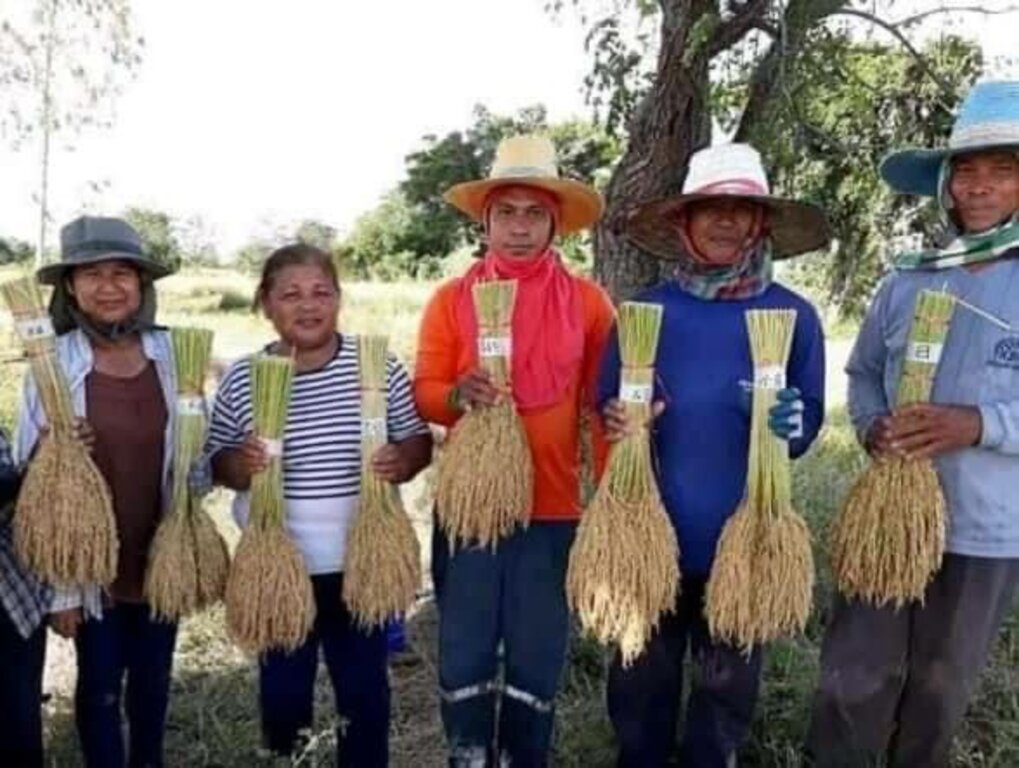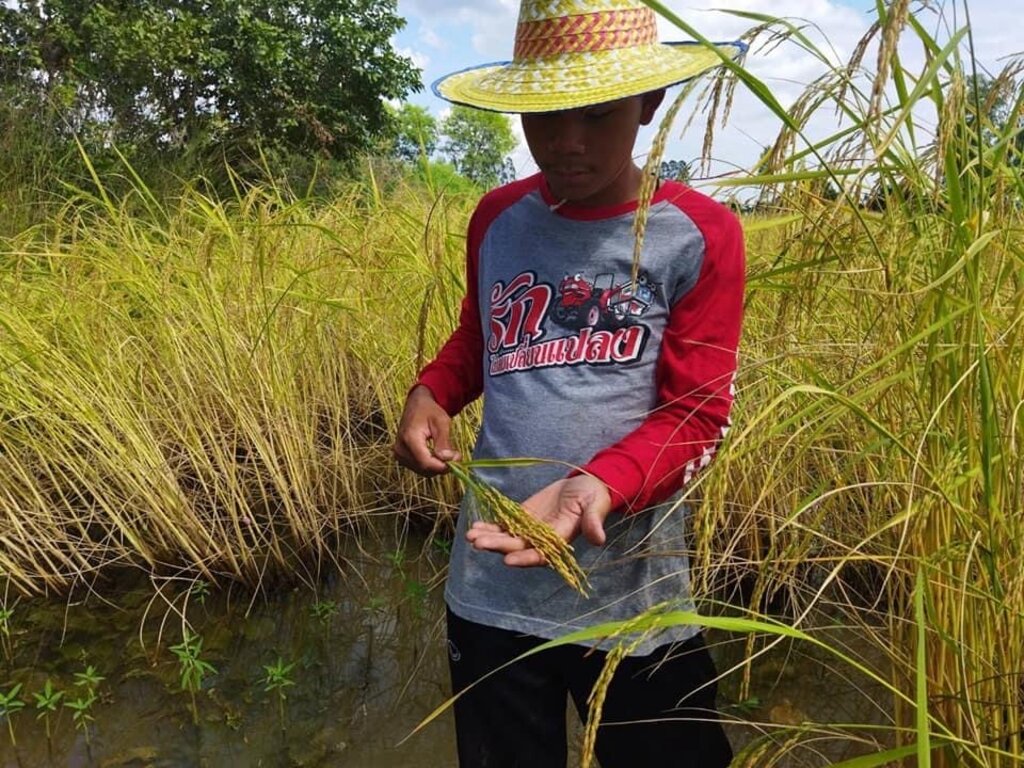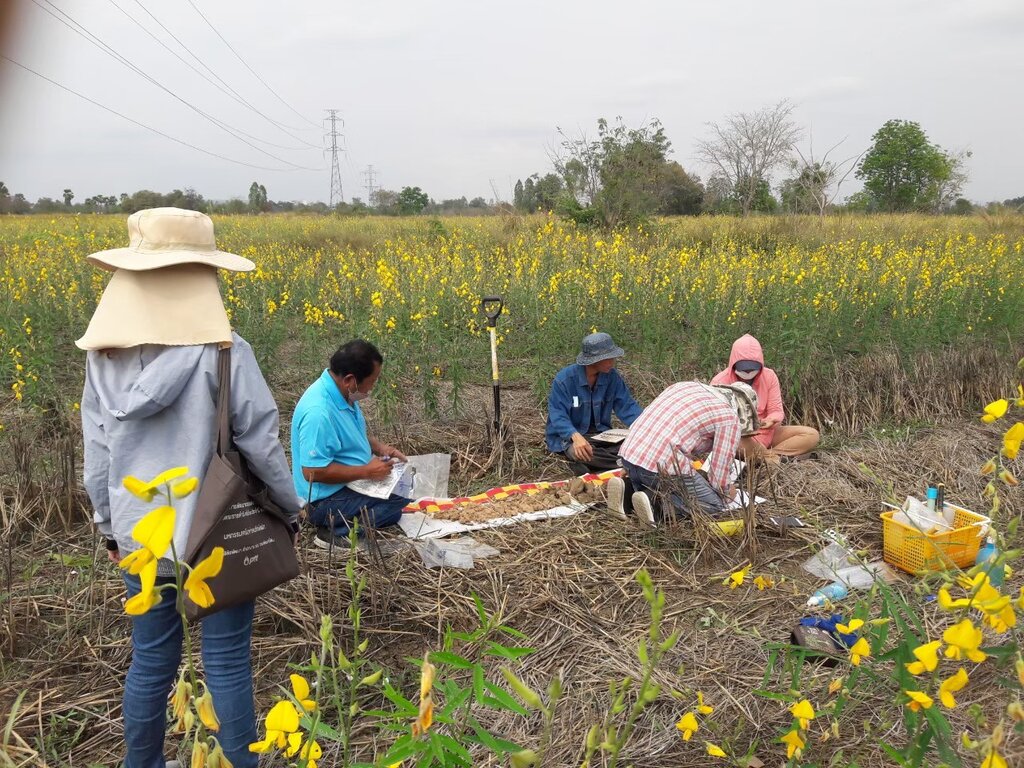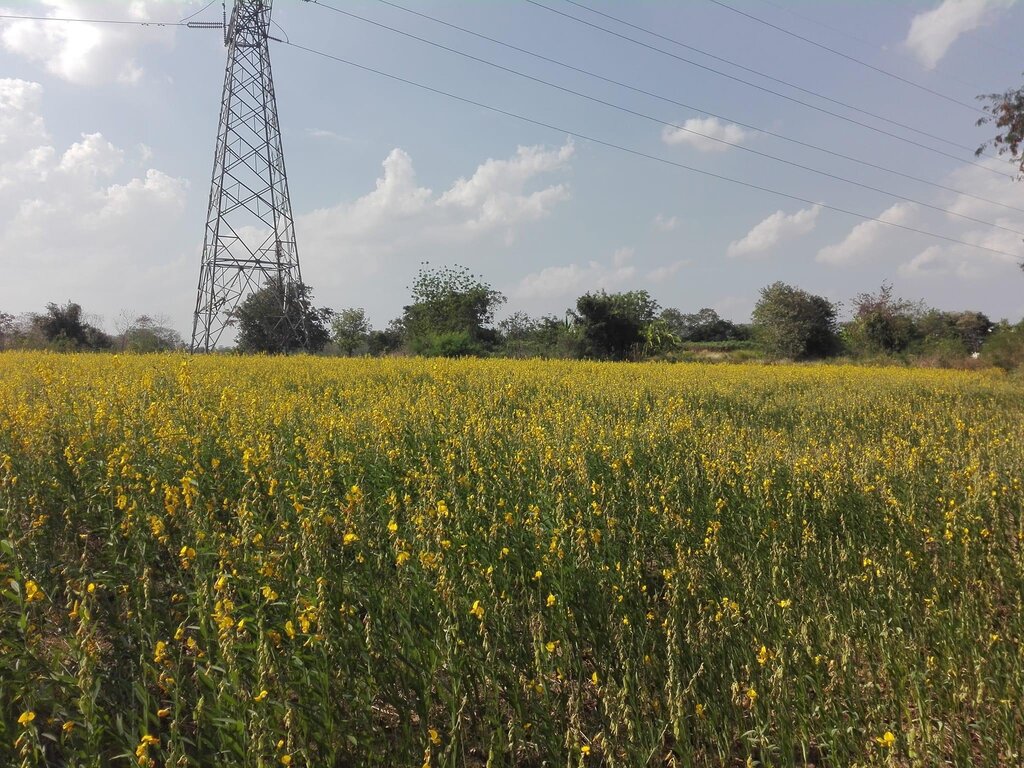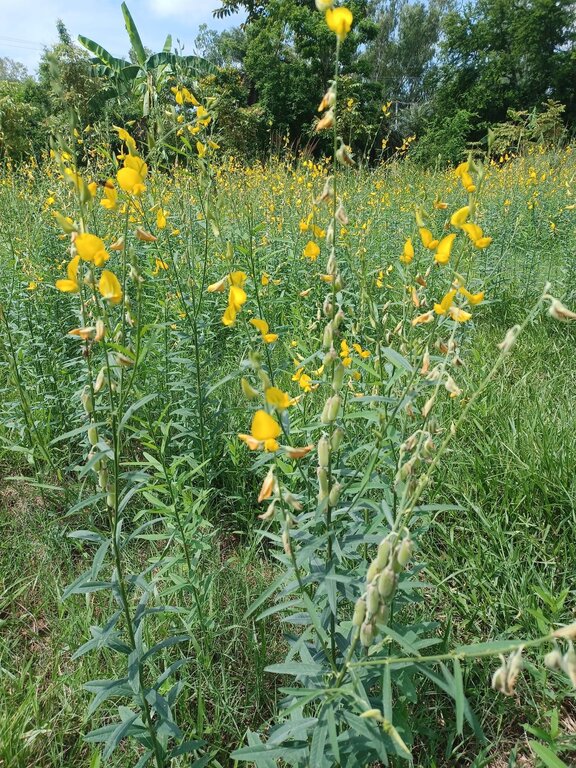EXTENSION OF SUNN HEMP AS A SOIL AMENDMENT IN SALINE SOILS [Thailand]
- Creation:
- Update:
- Compiler: Laksamee Mettpranee
- Editor: –
- Reviewers: William Critchley, Rima Mekdaschi Studer
approaches_7275 - Thailand
View sections
Expand all Collapse all1. General information
1.2 Contact details of resource persons and institutions involved in the assessment and documentation of the Approach
Key resource person(s)
land user:
Siangsunthia Mana
House No. 27, Moo 5, Ban Kok Phrom, Non Thai sub-district, Non Thai district, Nakhon Ratchasima province
Thailand
complier:
co-compiler:
Raksasarp Pitchanun
Land Development Department
Thailand
co-compiler:
Reviewer:
reviewer:
Name of project which facilitated the documentation/ evaluation of the Approach (if relevant)
Decision Support for Mainstreaming and Scaling out Sustainable Land Management (GEF-FAO / DS-SLM)Name of the institution(s) which facilitated the documentation/ evaluation of the Approach (if relevant)
Land Development Department (Land Development Department) - Thailand1.3 Conditions regarding the use of data documented through WOCAT
When were the data compiled (in the field)?
2013
The compiler and key resource person(s) accept the conditions regarding the use of data documented through WOCAT:
Yes
1.4 Reference(s) to Questionnaire(s) on SLM Technologies
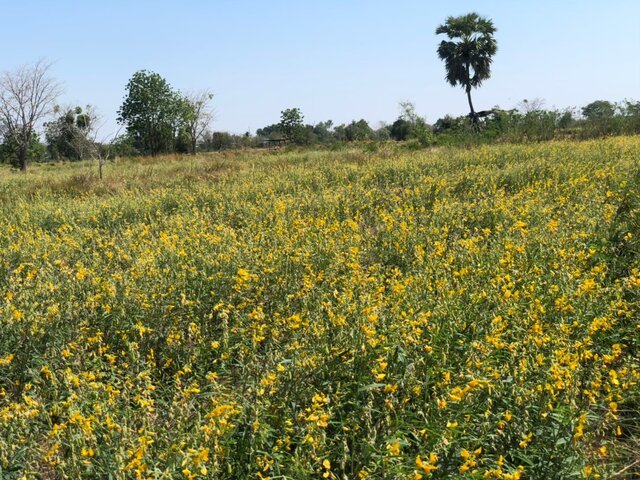
SUNN HEMP AS A SOIL AMENDMENT AND FOR … [Thailand]
Sunn hemp (Crotalaria juncea) has been promoted by the Land Development Department as a green manure plant with the objectives of increasing soil organic matter, improving soil fertility and reducing salinity levels.
- Compiler: Laksamee Mettpranee
2. Description of the SLM Approach
2.1 Short description of the Approach
An outreach programme aims to educate farmers about the benefits of ploughing rice stubble into the soil and incorporating green manure crops such as sunn hemp - as well as other sustainable practices. Groups of farmers are formed, and they are assisted by various organisations including the Land Development Department and volunteer "soil doctors".
2.2 Detailed description of the Approach
Detailed description of the Approach:
An outreach programme aims to educate farmers about the benefits of ploughing rice stubble into the soil, while incorporating green manure crops such as sunn hemp (Crotalaria juncea). It also provides demonstrations on proper and effective SLM techniques that enable farmers to apply this knowledge to improve their own lands. Farmers can generate greater and more sustainable income while reducing production costs. Agricultural staff of the Nakhon Ratchasima Land Development Station coordinate with local government agencies to organize activities and lead campaigns: they also help in planning and group formation. One particular group of 50 farmers is part of a project to encourage the use of organic substances instead of chemicals. A nine-member committee coordinates and drives its activities.
The purpose of group establishment is to exchange knowledge, create networks and develop clusters of active participant farmers to trade experience with SLM in relation to rice growing– including the cultivation of green manures and sunn hemp.
Agricultural academics and officers of the Land Development Department give training, as well as continuous advice, knowledge and support in managing areas with saline soils. The Rice Department provides salt tolerant varieties of rice. Government agencies provide some funding for the approach. They help preparing the learning process for coaching farmers in methods of natural agriculture. Study tours are also organised. Furthermore, a group of volunteer “soil doctors” with knowledge and expertise in the area lend their assistance and collaboration (note that the organisation and activities of soil doctors in Thailand has already been described in WOCAT’s global database). In addition, monitoring is carried out jointly between farmers and officers of Land Development Department.
Between 2010-2011, Land Development Department officials promoted farmers to plant Sunn hemp to plow and cover the soil and create seedbeds to collect seeds for use in the next season, which reduces production costs and increases organic matter in the soil.
2.3 Photos of the Approach
2.4 Videos of the Approach
Location:
Moo.5 Bankokprom, Nonthai District, Nakhonratchasima province
2.5 Country/ region/ locations where the Approach has been applied
Country:
Thailand
Region/ State/ Province:
Nakhonratchasima
Further specification of location:
Moo 5, Ban Kok Phrom, Non Thai sub-district, Non Thai district
Map
×2.6 Dates of initiation and termination of the Approach
Year of termination (if Approach is no longer applied):
2013
2.7 Type of Approach
- project/ programme based
2.8 Main aims/ objectives of the Approach
1. To build knowledge and understanding, and to provide farmers with access to soil, water and plant management technology to sustainably utilize saline soil areas.
2. To transfer knowledge regarding green manure plants (sunn hemp)-based saline soil management.
2.9 Conditions enabling or hindering implementation of the Technology/ Technologies applied under the Approach
availability/ access to financial resources and services
- enabling
Volunteer soil doctors and government agencies provided assistance and resources, including funding and knowledge.
collaboration/ coordination of actors
- enabling
A group of volunteer soil doctors with knowledge and expertise in the area and surrounding areas lent their assistance and collaboration.
knowledge about SLM, access to technical support
- enabling
Farmer,s farmer groups, land users, students and others use green manure crops to increase rice production and reduce the use of chemical fertilizers in saline soil areas and to strengthen the agricultural sector. The purpose of a group establishment is to exchanges knowledge, create networks and develop groups of farmers who use green manure in saline soil areas.
3. Participation and roles of stakeholders involved
3.1 Stakeholders involved in the Approach and their roles
- local land users/ local communities
Group members accounting for 50 people
Taking action together to make the group and the network become strong in utilizing land correctly and suitably
- SLM specialists/ agricultural advisers
Agricultural academics and officers of Land Development Department
Give advice, knowledge and support factors of production in managing areas with saline soil continuously
- researchers
1. Officers from Land Development Department
2. Students from Suranaree University of Technology
1. Monitor and assess saline soil management with organic matter together with water management in the area growing rice.
2. Study and use of electromagnetic measurement tools to predict soil salinity in the area for the benefit of salie land management during the growing season.
- local government
Non Thai Agriculture Marketing Organization
Non Thai Informal Education
1. Participate and coordinate in establishing the group
2. Preparing the learning process of conducting agricultural farming through the method of natural agriculture
3.2 Involvement of local land users/ local communities in the different phases of the Approach
| Involvement of local land users/ local communities | Specify who was involved and describe activities | |
|---|---|---|
| initiation/ motivation | interactive | Government agencies, group members transfer knowledge and take a study tour in order to implement learning and experiences in their own areas |
| planning | interactive | Agricultural academics and officers of Nakhon Ratchasima Land Development Station participate in planning to establish the group of using organic substances to replace agricultural chemicals. |
| implementation | interactive | The member group determines group rules and regulations together. |
| monitoring/ evaluation | interactive | Monitor and check together with Farmers and officers of Land Development Department |
3.3 Flow chart (if available)
Description:
Nakhon Ratchasima Land Development Station coordinates with local government agencies to organize activities and campaign for plowing and burying rice stubble and green manure plants of Sunn hemp to improve the soil. Collaborating with government agencies both internally, such as the Land Management Research and Development Division, and externally, such as Rice Department, Cooperative Auditing Department and educational institutions. By participating in the transfer of knowledge in various fields, leading to the same goal: farmers can generate income and reduce production costs in their agricultural areas sustainably.
3.4 Decision-making on the selection of SLM Technology/ Technologies
Specify who decided on the selection of the Technology/ Technologies to be implemented:
- mainly land users, supported by SLM specialists
Specify on what basis decisions were made:
- evaluation of well-documented SLM knowledge (evidence-based decision-making)
4. Technical support, capacity building, and knowledge management
4.1 Capacity building/ training
Was training provided to land users/ other stakeholders?
Yes
Specify who was trained:
- land users
- field staff/ advisers
- Volunteer Soil Doctors
If relevant, specify gender, age, status, ethnicity, etc.
These knowledge sharing events and trainings are gender balanced.
Form of training:
- on-the-job
- farmer-to-farmer
- demonstration areas
4.2 Advisory service
Do land users have access to an advisory service?
Yes
Specify whether advisory service is provided:
- on land users' fields
- at permanent centres
Describe/ comments:
Consulting services: Land users access consulting services provided by volunteer soil doctors stationed at Non Thai district and the government agency "Nakhon Ratchasima Land Development Station".
4.3 Institution strengthening (organizational development)
Have institutions been established or strengthened through the Approach?
- yes, moderately
Specify the level(s) at which institutions have been strengthened or established:
- local
- regional
- national
Describe institution, roles and responsibilities, members, etc.
- Non Thai Agricultural Marketing Organization, Nakhon Ratchasima province gives help and support in terms of meeting venues, facilitating collaboration
- Nakhon Ratchasima Land Development Station organizes training and supports factors of production, increases knowledge and regulations of establishing the group.
Specify type of support:
- capacity building/ training
4.4 Monitoring and evaluation
Is monitoring and evaluation part of the Approach?
Yes
If yes, is this documentation intended to be used for monitoring and evaluation?
No
4.5 Research
Was research part of the Approach?
Yes
Specify topics:
- technology
Give further details and indicate who did the research:
The research monitors and evaluates soil management for rice cultivation in saline soil areas by supporting the assessment of soil fertility and salinity values in order to plan sustainable saline soil management in response to current and future climate change. It is carried out by Miss Wannaporn Phonsang (Land Development Department) and other agriculturalists and field data collectors.
5. Financing and external material support
5.1 Annual budget for the SLM component of the Approach
If precise annual budget is not known, indicate range:
- < 2,000
Comments (e.g. main sources of funding/ major donors):
Land Developmet Department
5.2 Financial/ material support provided to land users
Did land users receive financial/ material support for implementing the Technology/ Technologies?
Yes
If yes, specify type(s) of support, conditions, and provider(s):
Green manure seed varieties and the establishment of green manure seed banks.Land development department provides green manure whereas seed banks provides seeds for land users
5.3 Subsidies for specific inputs (including labour)
- labour
| To which extent | Specify subsidies |
|---|---|
| fully financed | Farmers |
- agricultural
| Specify which inputs were subsidised | To which extent | Specify subsidies |
|---|---|---|
| seeds | partly financed | Land Development Department |
If labour by land users was a substantial input, was it:
- rewarded with other material support
5.4 Credit
Was credit provided under the Approach for SLM activities?
No
5.5 Other incentives or instruments
Were other incentives or instruments used to promote implementation of SLM Technologies?
Yes
If yes, specify:
Farmers who adopt the technology of using green manure crops will be selected to participate in the project with the Department of Land Development and will receive support for agricultural production factors as well as green manure crop seeds.
6. Impact analysis and concluding statements
6.1 Impacts of the Approach
Did the Approach empower local land users, improve stakeholder participation?
- No
- Yes, little
- Yes, moderately
- Yes, greatly
This approach encourages farmers to form groups and use Sunn hemp to improve and restore saline soil.
Did the Approach help land users to implement and maintain SLM Technologies?
- No
- Yes, little
- Yes, moderately
- Yes, greatly
Farmers in the area have embraced growing Sunn hemp as green manure to restore and improve saline soil, using it regularly and consistently.
Did the Approach improve knowledge and capacities of land users to implement SLM?
- No
- Yes, little
- Yes, moderately
- Yes, greatly
This approach effectively enhances knowledge in managing saline soil for rice cultivation.
6.2 Main motivation of land users to implement SLM
- increased profit(ability), improved cost-benefit-ratio
- reduced land degradation
- environmental consciousness
- enhanced SLM knowledge and skills
6.3 Sustainability of Approach activities
Can the land users sustain what has been implemented through the Approach (without external support)?
- yes
6.4 Strengths/ advantages of the Approach
| Strengths/ advantages/ opportunities in the land user’s view |
|---|
| 1. Land users monitor climatic changes in predicting disasters to occur. This is used as data for planning cultivation. As a result, there will be no damage during yield harvesting. |
| 2. Regarding knowledge in managing soil, water and plants for utilization in areas with saline soil, previously, rice farming could be conducted only and there was lack of knowledge of correct and suitable saline soil amendment until currently, costs of production can be reduced. |
| 3. The fact that the wisdom obtained from learning and practices has been applied together with academic principles to restore areas with saline soil which are limitations and obstacles during the past ten years have been eliminated makes farmers utilize areas with saline soil sustainably. |
| Strengths/ advantages/ opportunities in the compiler’s or other key resource person’s view |
|---|
| Farmers have knowledge and understanding. And accept the technology of saline soil improvement with green manure before planting. |
6.5 Weaknesses/ disadvantages of the Approach and ways of overcoming them
| Weaknesses/ disadvantages/ risks in the land user’s view | How can they be overcome? |
|---|---|
| Before implementing the technology of planting sunn hemp as a green manure plant, the cultivation area is outside the irrigation zone. This has an effect on biomass of the sunn hemp | |
| The farmers who join the group are ready to learn and observe the surrounding environment, including keeping up with climatic changes all the time. At certain time, there is shortage of labor. There are problems of expensive oil | establishing the group is the guideline to solve the mentioned problem. |
| Weaknesses/ disadvantages/ risks in the compiler’s or other key resource person’s view | How can they be overcome? |
|---|---|
| Climate fluctuations It doesn't rain according to season. Resulting in flooding, drought, which affects the use of green manure biomass |
7. References and links
7.1 Methods/ sources of information
- field visits, field surveys
12
- interviews with land users
3
- interviews with SLM specialists/ experts
3
7.3 Links to relevant information which is available online
Title/ description:
Final report : Improving information and developing a repository of sustainable soil management practices in Asia
URL:
https://e-library.ldd.go.th/library/Ebook/bib10906.pdf
Title/ description:
Workshop Report: Outstanding soil doctors and technology for land management Thailand 4.0
URL:
https://cesra.ldd.go.th/App_Storage/publications/files/1031_1.pdf
Links and modules
Expand all Collapse allLinks

SUNN HEMP AS A SOIL AMENDMENT AND FOR … [Thailand]
Sunn hemp (Crotalaria juncea) has been promoted by the Land Development Department as a green manure plant with the objectives of increasing soil organic matter, improving soil fertility and reducing salinity levels.
- Compiler: Laksamee Mettpranee
Modules
No modules


